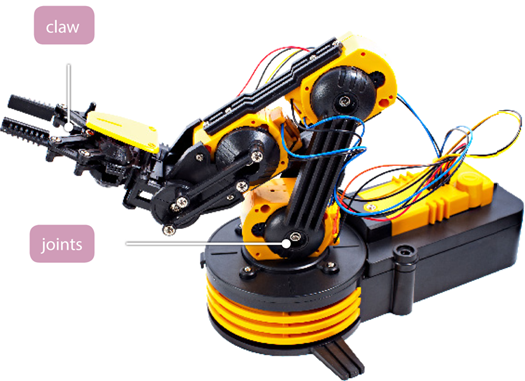
Chapter 4: Science
To understand what powers our homes, how icebergs form, and how gravity works, you need science. Every day, scientists learn more about how our world works.
HOW do robots know what to do?
How do robots know how to build a car, stock a warehouse shelf, or vacuum your bedroom floor? The answer lies in the similarities between robotic design and the human body. Like a human, a robot needs a “brain”—in this case, a computer—that can be programmed to perform different functions. Computer programmers break each specific task into several steps. The computer then directs small motors called actuators, which are located at different parts of the robot’s body. While muscles move human limbs, actuators move wheels, pistons, and gears. Many robots are equipped with sensors that allow them to track the distances their joints have moved, their locations in environments, and even the pressure they are putting on objects.

The handlike claw, or gripper, is programmed to do a particular task. It may tighten screws, hold a paint sprayer, or move things from place to place.
Like human arms, robotic arms have joints. Each joint has a motor.
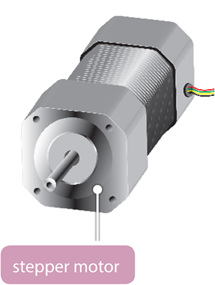
Different types of actuators can be used to move the parts of a robot. One type of electric motor is called a stepper motor, named for the way it rotates in small increments, or steps.
MECHATRONICS Mecha comes from “mechanical” and tronics from “electronics.” Combined with computer science, mechatronic technology is increasingly used in product development and manufacturing.

CAR PARTS Industrial robots assemble, package, and label products—even items as large as cars. As of 2015, the Ford Motor Company was using 20,000 robots in factories around the world. Some are equipped with lasers that act as “eyes,” scanning vehicles to make sure doors, windshields, and fenders are installed correctly.

HELPING HANDS Robots can be programmed to assist in many ways. Rory A. Cooper designed the Personal Mobility and Manipulation Appliance (PerMMA) to help people with disabilities perform everyday tasks. Its two robotic arms can be controlled using a touchpad, microphone, or joystick. It can also be controlled remotely by an assistant.

LEARNED BEHAVIOR Scientists can now create robots that respond to their environments. A feature called reactive control allows a robot to respond to external signals and change its behavior accordingly—for instance, altering course if it recognizes an object in its path. Some can change behaviors based on experiences.
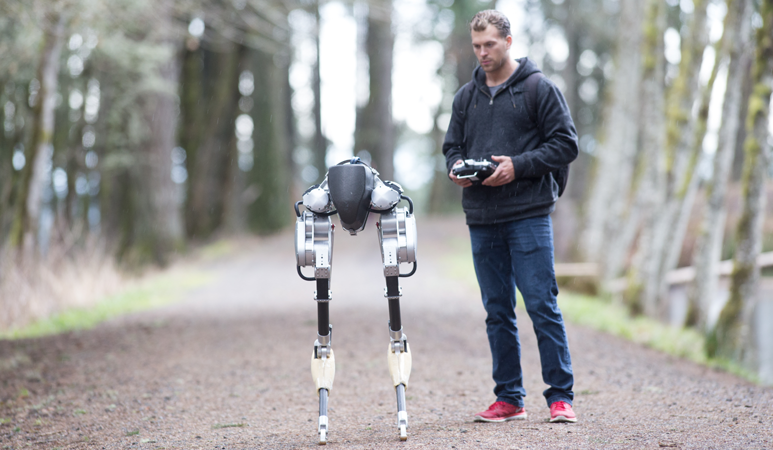
GETTING AROUND Robots move on wheels, treads, or even legs. Because search-and-rescue robots with two legs are often unstable, designers usually equip them with at least four. In 2017, however, a robotics team from the University of Oregon unveiled an agile two-legged robot named Cassie that can stand, handle difficult terrain and changes in elevation, and resist water damage. Cassie could be used for search-and-rescue operations in the future.
Did You Know?

The International Space Station (ISS) has a robotic arm that is 57.7 feet long. It moves equipment into place, captures unpiloted spacecraft carrying supplies, and has assisted astronauts during spacewalks. The arm can be controlled by the crew on board the space station or from ISS mission control at Johnson Space Center in Houston, Texas.
HOW does an iceberg form?
Glaciers are huge masses of ice that move very slowly over land. A chunk of ice that breaks off a glacier and floats across the sea is called an iceberg. Many icebergs originate in the North Atlantic Ocean. Every year, between 15,000 and 30,000 icebergs calve, or break off, from glaciers in Greenland, in the North Atlantic. The Titanic was a British ship that sank when it collided with an iceberg in the North Atlantic in 1912. A smaller number of icebergs form in Alaska, while some of the biggest break off from Antarctic ice shelves. One Antarctic iceberg was the size of Connecticut!

1. An iceberg starts out as snow falling on land. As more snow falls over thousands of years, the snow at the top packs down the flakes at the bottom.
2. Over the centuries, the packed-down snow becomes ice, which can grow to be hundreds of miles long and thousands of feet thick. This sheet of ice, known as a glacier, slowly moves forward under the force of its own weight.
3. The glacier, moving forward at a rate of up to six feet a day, eventually reaches the sea.
4. As the end of the glacier moves out past the land, the ice calves into the sea. The chunks that fall into the water are icebergs.
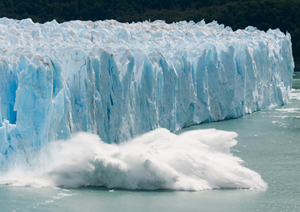
COOL CUSTOMERS Just-born bergs begin large—if floating ice isn’t at least 98 feet thick, it isn’t considered an iceberg. But most melt away in a few months. Some melt down into growlers, which are icebergs that are about as big as pianos. Slightly larger ones, called bergy bits, are about the size of small houses. Icebergs come in all kinds of shapes and colors. Tabular icebergs are shaped like tables, with flat tops and steep sides. Tabular icebergs are very large. Non-tabular icebergs can have rounded tops (dome iceberg), pointy parts (pinnacle berg), slots cut through by water (dry-dock berg), or just about any other odd shape formed by melting ice.
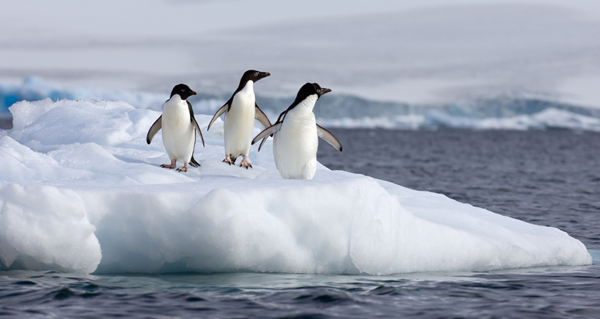
Growler
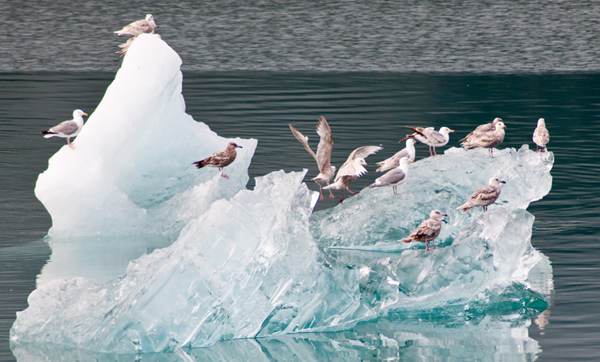
Bergy bit

Tabular iceberg

Dome iceberg

Pinnacle berg

Dry-dock berg

TRUE BLUE? Most icebergs are transparent. But they look white because air bubbles in the ice reflect visible light wavelengths equally. An iceberg can look blue, too, because it is made of thick ice. When glacial ice is compressed, air bubbles are squeezed out. The dense ice absorbs and reflects light differently, giving the iceberg a blue color. Algae, bits of rock, and sea life in the ice can cause green or yellow bergs.
HOW do scientists uncover and remove fossils from a dig?
Scientists who study the life of the past are called paleontologists (pay-lee-ahn-tah-lo-jists). They learn about prehistoric times by digging up and studying fossils, which are the remains of ancient plants and animals. Most fossils are bones and teeth—the hardest parts of an animal.
Finding fossils isn’t easy. Scientists might walk slowly for days across deserts, through canyons, over hills, or along riverbanks, looking at rocks. They keep their eyes peeled for a slightly different color that stands out from its surroundings—this might be a prehistoric bone. Once scientists discover a bone, they try to figure out what kind of animal it belonged to. That’s not always simple, because the fossils might be very tiny or broken. When scientists do find a fossil that interests them, the real work begins: removing it from the rock.

Paleontologists dig out dinosaur fossils from a vertical wall at Dinosaur National Monument, located in Utah and Colorado.
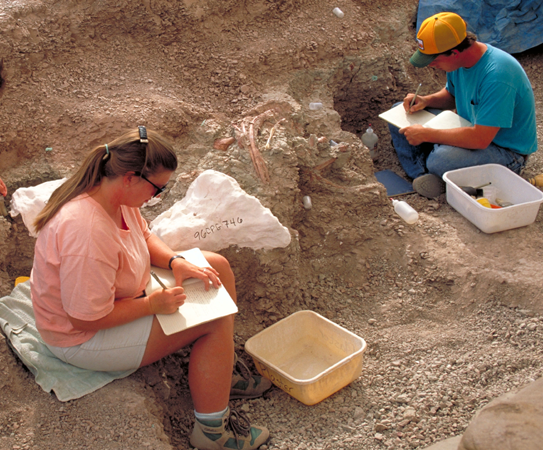
It’s important that paleontologists make accurate notes on the dimensions, locations, and other details of the bones they find. When they get back to the lab, this information helps them determine where and when the creature might have lived.
1. After a fossil is discovered, scientists use picks to gently dig away a block of rock around it. They clear away the rock fragments with a brush. If the bone is easily breakable, it is covered in liquid glue to harden it.

2. As scientists cut around the fossil, they wrap both the delicate bone and the surrounding rock in a protective jacket. A jacket is made of strips of burlap drenched in plaster. The strips are layered over the fossil, then coated with more plaster.

3. After the plaster cast dries, workers lift it from the ground and carry it to a vehicle. Some casts are so heavy, trucks or even helicopters are needed to take them from the site.
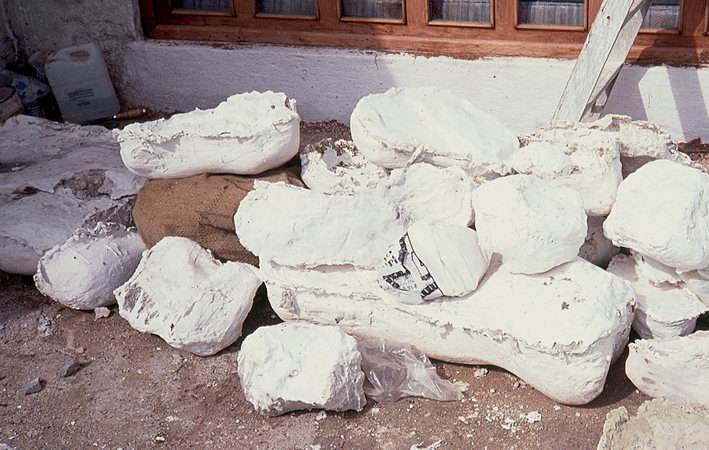
4. The cast is sent to a lab at a museum or university. There, researchers cut off the plaster and remove rock from the bones with tools such as brushes and grinders. They clean the bone and glue it back together if it is broken.

HOW does a combine harvester make wheat and straw?

Have you ever wondered how a field of grain—like wheat, barley, or rye—is turned into food for people? We eat only the edible seeds of grain crops—sometimes whole, like oats, and sometimes after they’ve been milled into flour and baked into bread. Separating edible seeds from their inedible outer casings (chaff) and lower stems (straw) is the key to turning grains into food. It is a difficult and time-consuming task. But a combine harvester can do it all. It is so named because it combines the three steps of harvesting grain: cutting, threshing, and winnowing.

1. The combine drives over crops, and the header gathers them.
2. A wheel pushes the crops against a cutter bar.
3. Screws and conveyors move the cut crops farther into the combine and deposit them into a threshing drum, where grains and stalks are separated.
4. A winnowing fan helps separate grains from straw. Grains and plant material are filtered through sieves.
5. Unwanted straw is sent out the back of the combine and clean grains are saved in tanks.

Threshing grain by hand
Handy work Before the invention of threshing machines, people cut grain with handheld blades called scythes. Plants were pounded to separate seeds and stalks in a process known as threshing. Winnowing is the task of removing the husks around the seeds by shaking the grains into the air so that the chaff blows away. A combine is an expensive farm machine, and some farmers still do the work by hand today.
THEY DO IT ALL Combines are multi-functional machines. They harvest corn with attachments called corn heads. Inside the combine, fast-spinning rotors separate the kernels and send them to a storage tank. Cobs and husks are dropped back onto the field. With different attachments, combines harvest sugar beets and deposit them in large mounds in the field, where they are gathered by the truckload. Some models are designed to harvest grapes. And others do the backbreaking work of picking cotton.
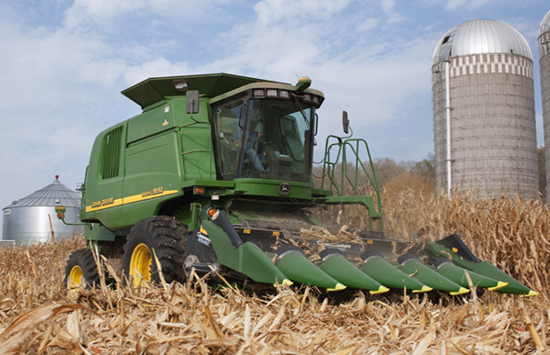
Corn
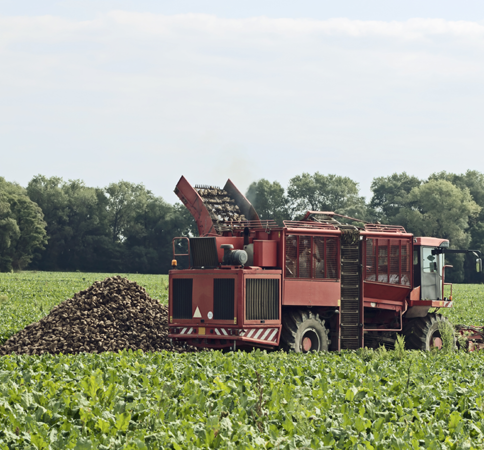
Beets
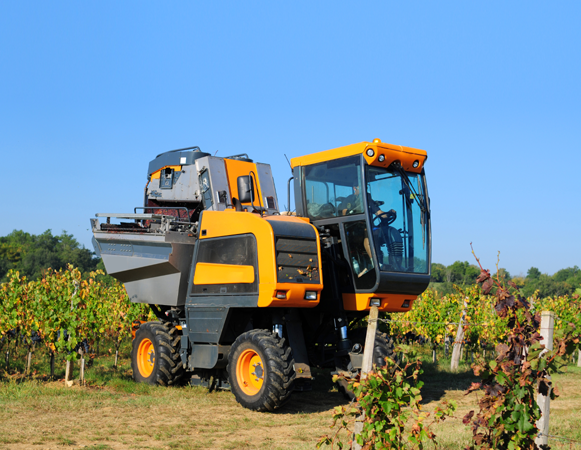
Grapes
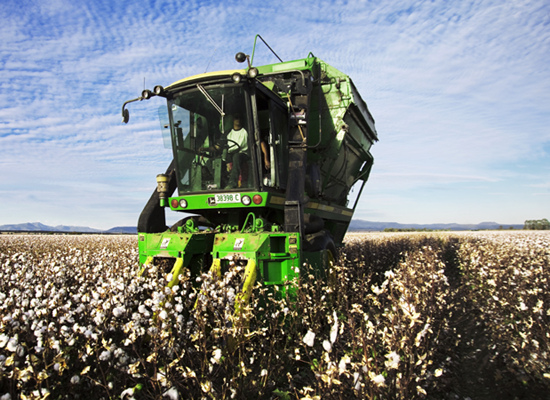
Cotton
Fast Fact
American Hiram Moore invented the combine in the 1830s. It took more than a dozen horses to operate. Later models used steam power. The Holt Company of California outfitted a combine with a gas-powered engine in 1911.
HOW do light bulbs work?
Every evening, the sun sets, and without sources of light it is difficult to cook, be social, do homework, or do other tasks around the home. For thousands of years, humans used fire to illuminate their environments. Many ancient civilizations—including the Egyptians, the Romans, and the Chinese during the Qin Dynasty—used wax or tallow candles with wicks. Humans had to make do with candlelight until British inventors showed in 1835 that electric light was possible using an arc lamp. That paved the way for the invention of the electric light bulb.
1. American inventor Thomas Edison patented the first electric bulb in 1879. It was known as an incandescent bulb. An incandescent bulb contains a wire called a filament. When electricity heats the filament to a very high temperature, it produces light. Edison’s first bulb used a carbon filament and burned for a little over 13 hours. Other inventors experimented with different filament materials, including tungsten, that last for longer periods of time. Incandescent bulbs are cheap to make and come in many sizes. On the downside, they use lots of energy, burn out quickly compared to other bulbs, and have a negative impact on the environment.

2. In 1955, two inventors from General Electric in Ohio developed a stronger, longer-lasting version of the incandescent bulb called a halogen bulb. A halogen bulb is filled with halogen gas. Due to a chemical reaction between the halogen and the metal filament inside, the bulb burns longer, brighter, and more efficiently than an incandescent light bulb. Because of their power, halogen bulbs are often used to light movie sets. The downside of halogen bulbs is their dangerously high temperature, which can cause burns if users touch them. People can transfer their skin oils to the bulbs, which may shatter if the heated oils create too much surface heat.
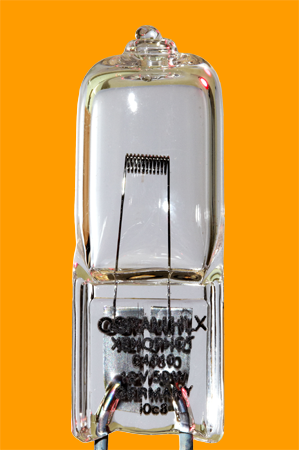
3. A fluorescent bulb does not have a filament. Instead, it uses gas and a special coating on the inside of the bulb to produce light. The concept behind fluorescent bulbs has been around since the 19th century, but the bulbs did not become available until the 1930s, after many different inventors perfected the technology. Fluorescent bulbs are often used to light large, open spaces, including factories, stores, and tunnels.

4. The compact fluorescent light, or CFL, was invented in the 1970s in response to a widespread energy crisis. CFLs warm up slowly, but they take 70% less energy to run than incandescent bulbs. In a CFL bulb, an electric current runs through a tube filled with argon (a gas) and mercury vapor. When electrons interact with the mercury atoms, ultraviolet light is created. This light is beyond the spectrum of light we normally see. When the ultraviolet light hits a coating on the inside of the tube called a phosphor, it turns visible and begins to glow. Since CFLs don’t have filaments, they remain cool and don’t burn out as quickly as incandescent bulbs.
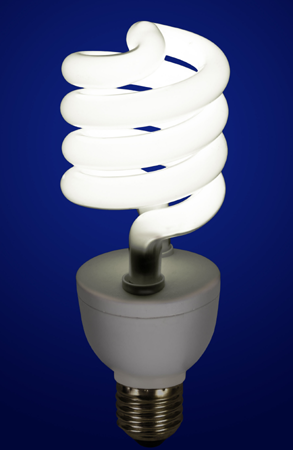
5. Light-emitting diodes, or LEDs, are another type of light source. An LED creates light when electrons move in a semiconductor material. Electrons lose energy and that energy is emitted as light. LEDs are expensive, but they burn for a long time—up to 50,000 hours. The first LED of visible light was invented in 1962 by Nick Holonyak, Jr., in Syracuse, New York.
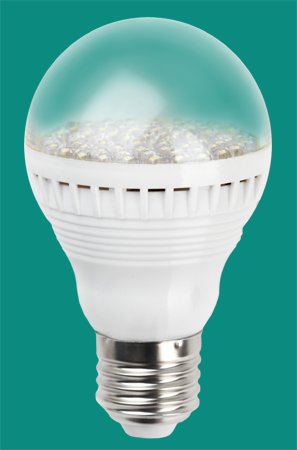
Fast Fact

A patent gives an inventor the sole right to manufacture or sell his or her invention for a period of time. Edison applied for his first patent in 1868, at the age of 21. Over his lifetime, he held 1,093 patents.
HOW are oil spills cleaned up?
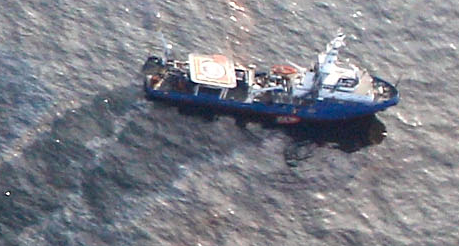
In 2010, an explosion on an oil rig in the Gulf of Mexico killed 11 workers and sent oil spewing into the water. Before the leak was plugged, 206 million gallons of oil had flowed into the Gulf, making it the worst oil spill in U.S. history. In an average year, ships and pipelines spill about 1.3 million gallons of oil in U.S. waters.
Oil spills happen for many reasons, from natural disasters such as hurricanes and earthquakes to accidents involving tankers, pipelines, and oil storage tanks. Whatever the cause, oil spills—especially those in the ocean—harm animals and the environment. Because oil spills have become common, more and more ways of cleaning them up have been invented.

BOOMS These long, snakelike tubes float on the water like fences to corral an oil slick and keep it from spreading.

ABSORBERS Spongelike substances called sorbents are dropped into the water to absorb oil. Sorbents can be natural materials like straw or sawdust, or they can be human-made materials. When they have absorbed all they can, the oil-soaked sponges are removed from the water.

BURNING Sometimes an oil slick is set on fire to burn off the oil. But the smoke causes air pollution.
HOW ARE BIRDS CLEANED AFTER AN OIL SPILL?

A veterinarian checks a bird's physical condition and gives the okay for it to be washed. Washing a stressed bird could kill it.
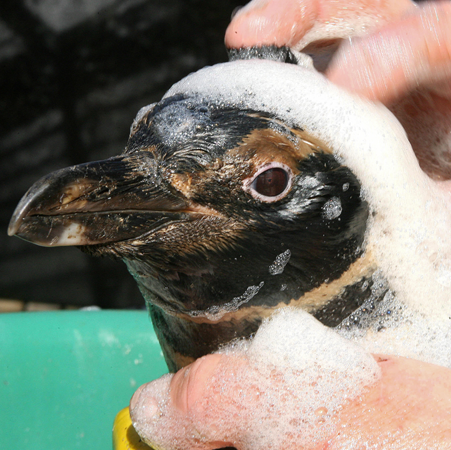
Workers clean the bird’s eyes and breathing passages. They wash it in a tub of warm water containing a small amount of dishwashing liquid. The bird then gets a shower of clean water to rinse away soap and oil.
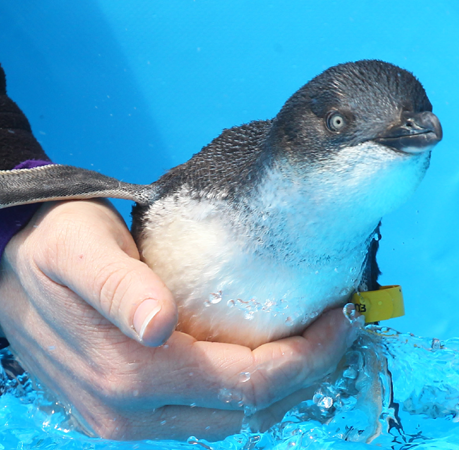
The bird is transferred to a pool of warm water, where it uses its beak to preen, or smooth its feathers. The bird is then put into a pool of cold water to make sure it can float and its feathers are waterproof.
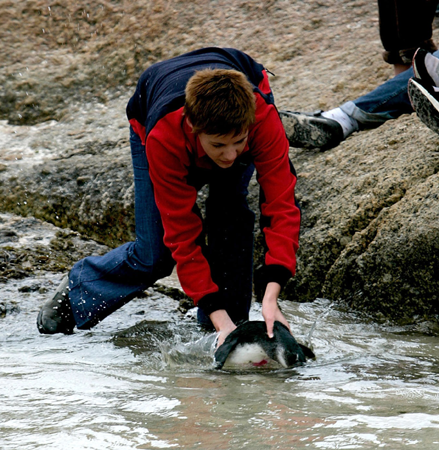
Before releasing the rehabilitated bird, biologists may attach a tag or a radio transmitter to the animal to track its movement and study its behavior.
HOW does gravity work?
No matter where you are on Earth, there’s no escaping gravity. Even professional basketball players have to land back on the court after leaping into the air. What goes up must come down.
We know gravity is powerful, but how does it work? All objects that have mass—including you—exert gravitational force. This is the force that pulls objects toward one another, like the basketball player who is pulled toward the ground.
The degree of gravitational force between objects depends on the mass of the objects and how close they are to one another. Small objects with low mass exert weak gravitational force, while larger objects—such as the sun, moon, and planets—have strong gravitational force. When objects are close together, the gravitational pull between them is stronger than when they are far apart.
Isaac Newton was a 17th-century English scientist who figured out how gravity works. The story goes that an apple fell on his head while he was sitting under an apple tree, and he wondered what caused it to drop. He developed the law of universal gravitation, which states that all particles of matter in the universe attract each other in ways that depend on their sizes and distances.
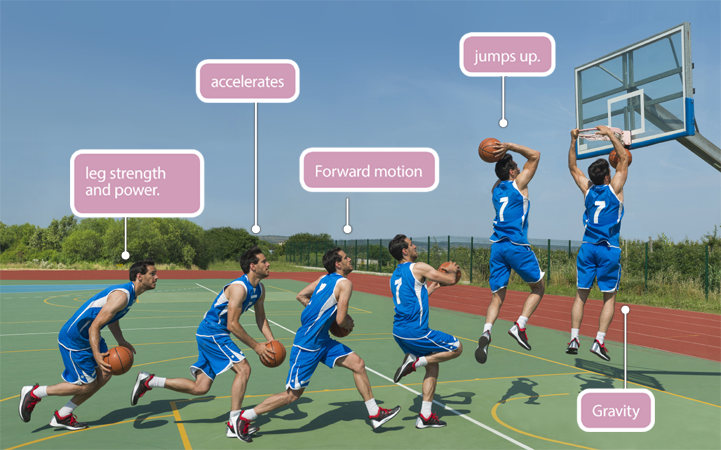
Training builds leg strength and power.
The player accelerates, gaining speed.
Forward motion propels the player toward the basket.
Hang time begins when the player jumps up.
Gravity forces the player back to the ground.
EARTH AND MOON
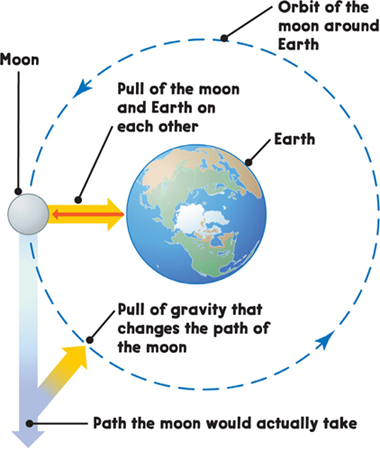
The gravitational pull of the sun keeps Earth orbiting it at just the right distance, giving us the light and heat needed for our survival. The gravitational force of Earth pulls the moon toward Earth’s center; this keeps the moon in its orbit and prevents it from moving in a straight line out into space. Even the moon’s gravitational pull affects our planet—it influences the oceans, creating the rise and fall of the tides.
HEAVY STUFF
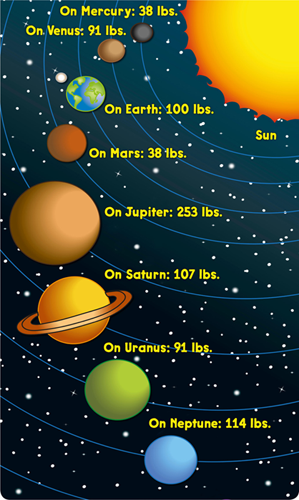
The terms mass and weight are sometimes used interchangeably, but they are not the same thing. Weight is the force of gravity acting on an object, while mass is the amount of stuff an object is made of. Your body would have the same mass on the moon as it does on Earth. But because there is less gravitational force on the moon, you would weigh less there. A 100-pound person would weigh just 17 pounds on the moon, and these weights on other planets:
Did You Know?
If a bowling ball and a marble were to drop off the top of a building, which would hit the ground first? If you said the bowling ball (because it’s heavier), you’d be wrong. Both would land at the same time, assuming there was no air resistance —the speed at which objects fall is the same, no matter their weight.
HOW TO use math in everyday life
Math is involved in many parts of your life. If you’ve ever had to calculate how long it will take you to walk from your house to the bus stop or how many chapters of a book you need to read each night so you can finish a report on time, you’ve used math in daily life. No matter where you look, numbers and math are everywhere.
What to do:
1. SPORTS Whether you’re trying to hit a home run over the outfield wall, throwing a football 60 yards down the field, or watching the shot clock on the basketball court, numbers count. Here are important numbers on the basketball scoreboard:
• Game score
• Period of play
• Time left in period
• Fouls
• Shot clock (time player has to make a shot)

2. FOOD In restaurants, chefs use math in many ways. They calculate how much food to buy, how much to make, how long it will take to prepare and cook, how many cooks they need, and how much to charge for each dish. Food math matters at home, too. On pizza night, how many pizzas do you need to be sure you have enough slices for everyone? (There may be leftover slices, depending on how many you want.)
Number of people: 8
Number of slices per pizza: 6
People eating two slices: 3
People eating one slice: 4
Number of slices you want: ?

3. MUSIC Musicians use math to interpret scales, chord patterns, rhythm, and timing. A scale spans eight musical notes in ascending or descending order. Notes have different values, such as a whole, a half, and a quarter. Distances between notes (high and low pitches) are described numerically, as shown in the line of music above.

4. BUILDING How much wood is needed to build a house? How many nails? How many workers? How long will it take, and how much will it cost? Carpenters and builders use mathematical calculations in their work. If they cut a piece of wood to the wrong length, it’s useless, which means wasted time and money. Can you guess what the common builder’s expression “measure twice, cut once” means?
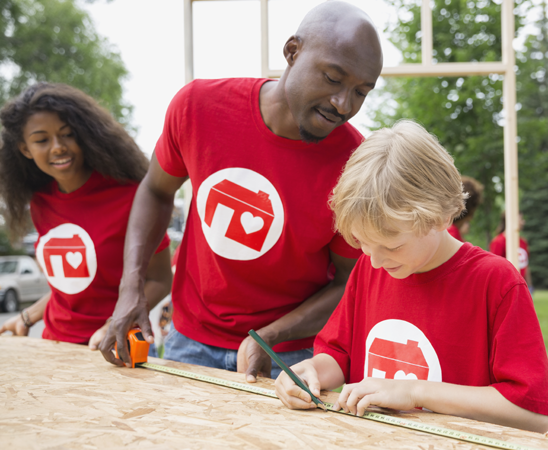
5. GROWING From backyard gardeners to farmers with acres of crops, growers use math to figure out how many seeds they need, how long it will take for plants to grow, and how many days before harvesting. Plants and crops need the right amount of water—not too much and not too little—so growers may also track weather and rainfall to help determine whether and when to water their plants.
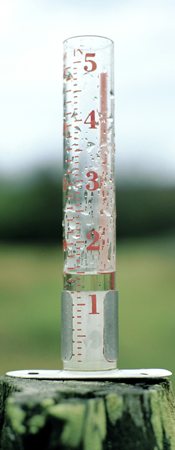
JUST FOR FUN Have you heard any good math jokes lately? How about these:
Q: Why is 6 afraid of 7?
A: Because 7 8 9!
Q: What did the 0 say to the 8?
A: Nice belt!
IT ADDS UP! You can wow your friends with this amazing math trick—the answer is always the same whatever numbers you use, so long as you follow these steps:
1. Take a three-digit number (the numbers must be in decreasing order) and invert it (write it backwards).
2. Subtract the inverted number from the original number.
3. Invert the answer. Now add that answer to its inverted version. The result will always be 1,089!
Example:
651 → 156
651 − 156 = 495
495 → 594
495 + 594 = 1,089
Fast Fact
If you add two even numbers, the sum will be an even number. And if you add two odd numbers, the sum will also be an even number. But if you add an odd and an even number, the sum will be an odd number.